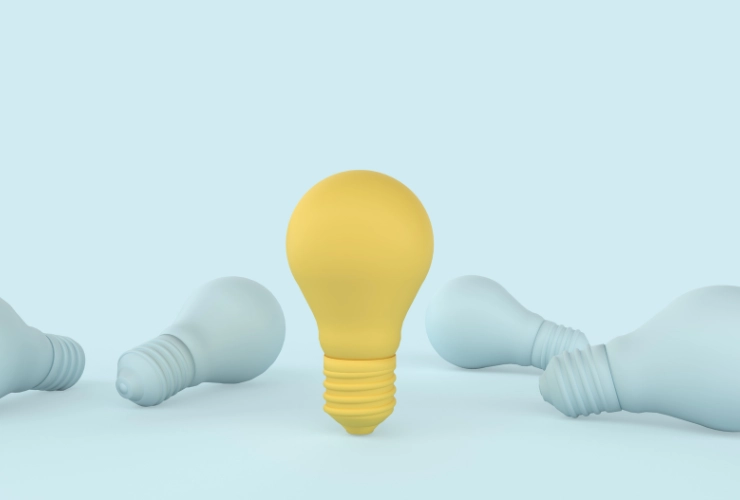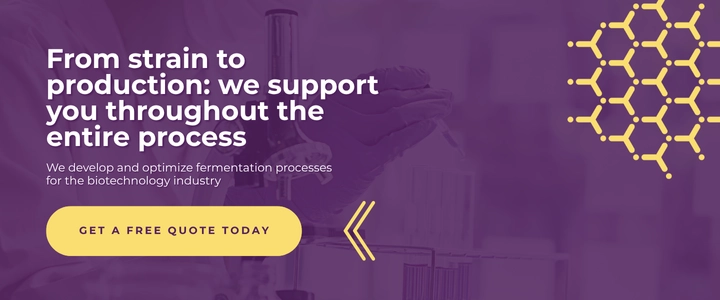Turning an idea into a market-ready product requires more than creativity. It involves a structured process, from validating the concept to prototyping and manufacturing. In this guide, we walk you through each essential step to help you bring your innovation to life. Whether you’re developing a biotech solution, an industrial component or a consumer product, here’s how to turn an idea into a product successfully and navigate the path to production.

Why is turning an idea into a product so challenging?
Moving from concept to product is a journey filled with opportunities—yet also with complex challenges. Many promising ideas stall because their creators underestimate the multi-disciplinary nature of product development. It’s not just about design or manufacturing; it’s about integrating technical feasibility, market demand, intellectual property and regulatory compliance.
For example, in the biotechnology sector, turning a novel microbial strain into a viable commercial product requires navigating strict quality controls, scaling processes from lab to production and ensuring regulatory approvals. The same applies to sectors such as agriculture or pharma, where product performance and compliance are paramount.
Another common challenge lies in timing: when is the right moment to prototype? To file a patent? To approach manufacturers? Without a clear roadmap, it’s easy to lose time and resources.
Finally, scalability is often overlooked. Designing a product that can be efficiently manufactured at larger volumes is very different from building a one-off prototype.
At Cultiply, we understand these dynamics. We help innovators optimise each stage—from concept validation to manufacturing—to ensure a smoother transition from idea to market.
Step-by-step process: how to get a product manufactured
Transforming an idea into a product that can be manufactured—and successfully launched—requires a methodical approach. Each stage builds the foundation for the next, much like cultivating a robust microbial culture before scaling it in a bioreactor. Below, we outline the essential steps to guide your innovation from concept to production. Whether you are developing a biotech application, an agritech solution, or a pharmaceutical product, following a clear roadmap will optimise both time and resources.
1️. Market research and validating your idea
Before investing in design or prototyping, it’s crucial to confirm that your product meets a genuine market need. Does it solve a problem that customers face? Who are your competitors? In sectors like biotechnology, where development cycles are long and regulatory hurdles high, market validation is key to de-risking the project.
Tools such as customer interviews, competitor analysis, and small-scale pilot studies can help you refine your value proposition.

2️. Checking patents and intellectual property
Securing intellectual property is often essential to protecting your innovation. Conduct a patent search to identify potential conflicts and explore options such as patents, design rights, or trademarks.
For example, when developing engineered microbial strains, the method of strain optimisation or specific genetic modifications may be patentable. Filing early, before public disclosure, is important to preserve your IP position.
3️. Designing and prototyping your product
This is where your idea starts to take physical (or digital) form.
For hardware-based products, this involves creating CAD models, selecting suitable materials and considering the manufacturability of each component. In bioprocessing, prototyping could mean small-batch fermentation trials or lab-scale runs to optimise yield and product quality.
At Cultiply, we often advise clients to use iterative prototyping—rapid cycles of testing and refining—rather than pursuing a “perfect” first prototype. This approach shortens timelines and reduces costly mistakes later on.
4️. Testing and refining the prototype
Once a working prototype exists, rigorous testing follows.
- Does the product perform as expected?
- Can it be reliably manufactured?
- Will it comply with applicable regulations (e.g. GMP in pharma, EFSA standards in food applications)?
For biotech products, this often involves analytical testing (purity, stability, activity) and process validation to ensure reproducibility. In consumer markets, functional testing and user feedback loops are equally vital.
5️. Planning manufacturing: materials and suppliers
How to get a product manufactured efficiently depends heavily on selecting the right materials and partners.
Begin by identifying critical raw materials and potential suppliers. For instance, a company developing biofertilisers must ensure consistent sourcing of microbial inputs, fermentation substrates and stabilisers.
Simultaneously, consider manufacturing scale: are you producing small batches for niche markets or planning high-volume production? This will affect both equipment selection and supplier choice.
6️. How to get a product manufactured: contacting manufacturers
With a validated design and production plan, you’re ready to engage manufacturers.
Prepare a clear technical package:
- Drawings and specifications for hardware
- Process descriptions for biotech products (e.g. fermentation parameters, downstream processing steps)
Selecting the right manufacturer depends on several factors:
- Technical capabilities
- Experience in your product category
- Regulatory certifications
- Location and logistics
In biomanufacturing, choosing a contract development and manufacturing organisation (CDMO) with expertise in scaling biological processes can accelerate time to market. In industrial or consumer products, options range from local suppliers to international partners.
7️. Preparing for market launch
Finally, as manufacturing ramps up, focus shifts to commercial readiness:
- Packaging design
- Labelling and compliance
- Distribution channels
- Marketing strategy
For regulated products (pharma, food, agriculture), this phase may also include regulatory submission and approval processes.
Throughout, maintaining alignment between R&D, manufacturing and commercial teams is key to a smooth transition from prototype to product on the shelf.
Tools and resources to help turn your idea into a product
A robust toolbox can accelerate the journey from idea to product. Leveraging the right tools helps optimise decision-making and reduce development risks.
For market validation, platforms like SurveyMonkey or Typeform enable you to gather user feedback quickly. When assessing intellectual property, Google Patents or national patent office databases are essential for early-stage checks.
In the design phase, CAD software such as SolidWorks or Fusion 360 is invaluable for creating prototypes. For bioprocess development, tools like Design of Experiments (DoE) and process simulation software support efficient optimisation of fermentation and downstream steps.
When it’s time to move towards manufacturing, platforms such as ThomasNet or Kompass can help identify specialised suppliers or manufacturers. For biotech or pharmaceutical products, selecting a capable CDMO (Contract Development and Manufacturing Organisation) is key.
And if you plan to test market demand before scaling, crowdfunding platforms such as Kickstarter or Indiegogo offer valuable exposure and funding opportunities.
At Cultiply, we help clients integrate these tools strategically, ensuring that every stage—from idea to product manufacturing—is as efficient and scalable as possible.
Real-world examples: from idea to market success
Bringing an idea to life is not an abstract exercise. Let’s explore two real-world examples that illustrate how following a structured process can drive success.
Example 1 – Biotech (Agriculture): A startup aimed to develop a biofertiliser based on novel nitrogen-fixing bacteria. Cultiply supported them through strain optimisation, pilot fermentation, and scale-up design. By aligning upstream performance with downstream processing, the team achieved a cost-effective, scalable solution that is now sold across European markets.
Example 2 – Industrial equipment: An engineering firm wanted to transform a laboratory-scale membrane bioreactor concept into a marketable industrial system. After thorough process modelling and materials selection, they partnered with a specialised manufacturer. The product now supports bioprocessing in the food and nutraceutical sector, achieving both regulatory compliance and commercial viability.
These examples underscore a key principle: whether in biotech, pharma, agro or industrial markets, a step-by-step approach ensures that innovations are not only technically sound, but also manufacturable and market-ready.

Common pitfalls to avoid when developing a new product
Even the best ideas can falter if key pitfalls are not avoided. Here are some common traps—and how to overcome them:
Skipping market validation: Assuming demand without testing is risky. Always validate your concept early with real users.
- Underestimating regulatory complexity
In sectors like biotech or food, regulatory requirements can be stringent. Failing to plan for compliance can delay or block market entry. - Ignoring manufacturability: Designing a beautiful prototype is not enough. Always consider scalability and manufacturing constraints from the outset. Engage manufacturing experts early.
- Inadequate IP strategy: Delaying patent filing or neglecting IP protection can expose your innovation to competition. Protect your ideas in parallel with development.
- Mismanaging costs and timelines: Without realistic budgeting and staged planning, many projects run out of resources. Use clear milestones and review progress regularly.
At Cultiply, we work with clients to anticipate these pitfalls—optimising the entire development pathway to minimise risk and maximise market success.
Summary and next steps: ready to bring your idea to life?
Turning an idea into a product is a rewarding yet complex process. From validating the concept to getting it manufactured and ready for market, every step matters.
By applying a structured, step-by-step approach—supported by the right tools and expert guidance—you can navigate this journey with greater confidence. Whether you’re developing a biotech innovation, a new industrial product, or a solution for the agro or pharma markets, planning for manufacturability and scalability from the outset is key.
At Cultiply, we help innovators optimise their path from idea to production. Ready to bring your concept to life? Let’s explore it together.
















